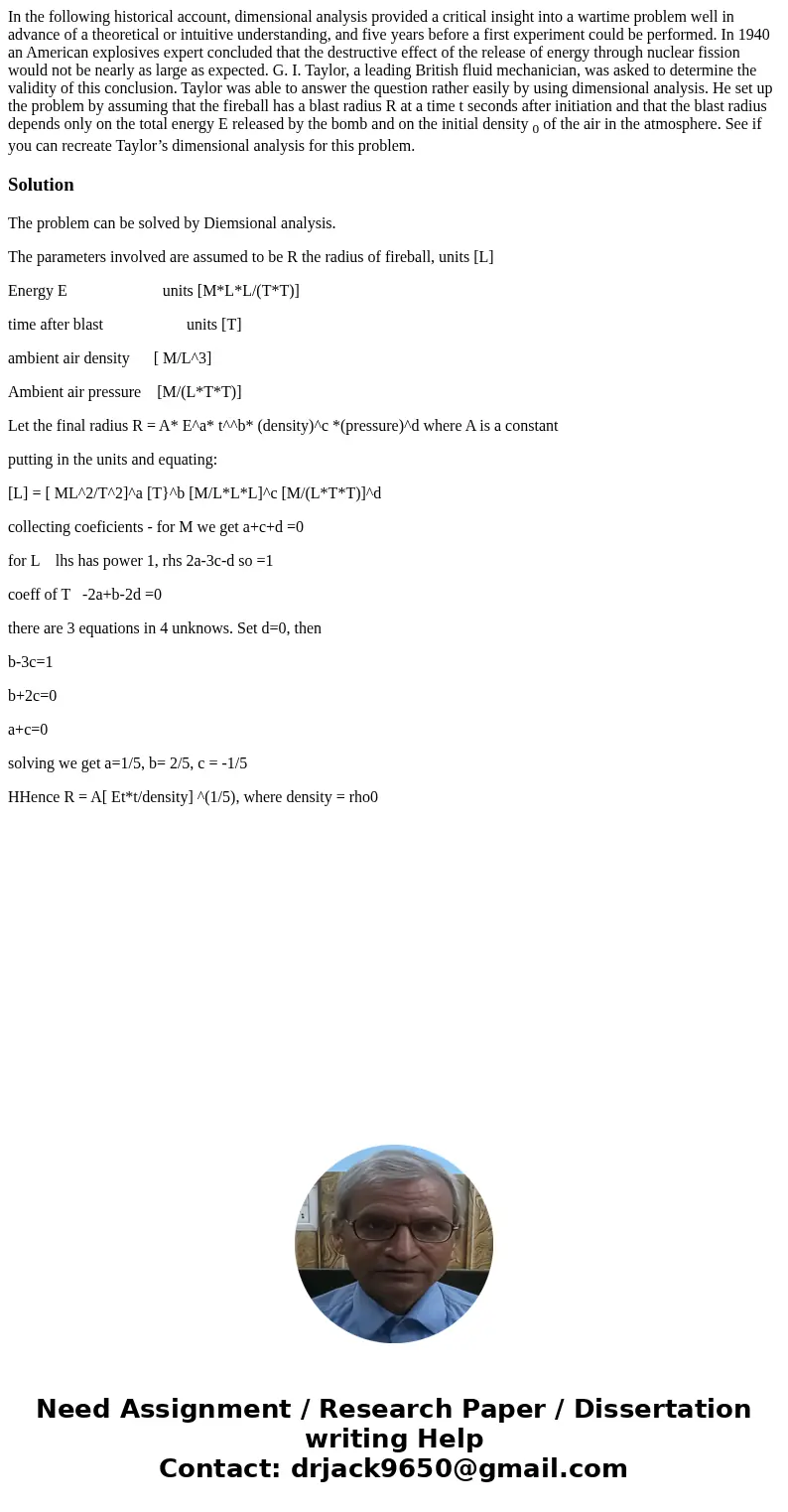In the following historical account dimensional analysis pro
In the following historical account, dimensional analysis provided a critical insight into a wartime problem well in advance of a theoretical or intuitive understanding, and five years before a first experiment could be performed. In 1940 an American explosives expert concluded that the destructive effect of the release of energy through nuclear fission would not be nearly as large as expected. G. I. Taylor, a leading British fluid mechanician, was asked to determine the validity of this conclusion. Taylor was able to answer the question rather easily by using dimensional analysis. He set up the problem by assuming that the fireball has a blast radius R at a time t seconds after initiation and that the blast radius depends only on the total energy E released by the bomb and on the initial density 0 of the air in the atmosphere. See if you can recreate Taylor’s dimensional analysis for this problem.
Solution
The problem can be solved by Diemsional analysis.
The parameters involved are assumed to be R the radius of fireball, units [L]
Energy E units [M*L*L/(T*T)]
time after blast units [T]
ambient air density [ M/L^3]
Ambient air pressure [M/(L*T*T)]
Let the final radius R = A* E^a* t^^b* (density)^c *(pressure)^d where A is a constant
putting in the units and equating:
[L] = [ ML^2/T^2]^a [T}^b [M/L*L*L]^c [M/(L*T*T)]^d
collecting coeficients - for M we get a+c+d =0
for L lhs has power 1, rhs 2a-3c-d so =1
coeff of T -2a+b-2d =0
there are 3 equations in 4 unknows. Set d=0, then
b-3c=1
b+2c=0
a+c=0
solving we get a=1/5, b= 2/5, c = -1/5
HHence R = A[ Et*t/density] ^(1/5), where density = rho0

 Homework Sourse
Homework Sourse